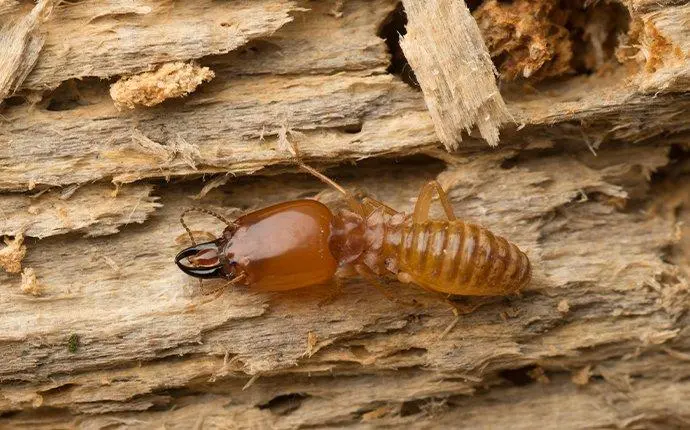 As a homeowner in Raleigh, NC, it is likely that you already have plenty on your to-do list, so maybe you think that termite prevention is not an option. If so, you are right: it’s actually a necessity. You might think you only have to worry about a termite infestation during “termite season,” but that’s simply a term used to describe when termites mate and new colonies are formed. Unfortunately, these invasive pests are constantly working and eating home foundations across America throughout the year, so lack of prevention could cost you thousands.
As a homeowner in Raleigh, NC, it is likely that you already have plenty on your to-do list, so maybe you think that termite prevention is not an option. If so, you are right: it’s actually a necessity. You might think you only have to worry about a termite infestation during “termite season,” but that’s simply a term used to describe when termites mate and new colonies are formed. Unfortunately, these invasive pests are constantly working and eating home foundations across America throughout the year, so lack of prevention could cost you thousands.
Destruction Over Time
The most common species of termite in Raleigh is the subterranean termite, which gets its name from its affinity for tunneling just under the surface of soggy soil in search of its favorite food: moist, rotting wood. This is a particularly aggressive species of termite, capable of causing severe damage in a home.
Even though subterranean termites work the fastest of any other termite species, it still takes them well over a year to do significant damage to your home. However, if given 12 to 18 months, they can cause an average of $3,000 worth of damage and more. That’s why spotting the signs of an infestation is so important. While you may not be able to notice subterranean termites at work within your walls, you might notice other signs of an infestation, such as:
- Mud tubes along the outside walls near the ground
- Swarmers (winged termites) in large, buzzing clouds
- Soft clicking noises from within walls
- Doors and windows becoming difficult to open and shut
If you notice these signs, keep in mind that nothing you can do will remove a termite infestation, aside from enlisting professional help.
Avoiding Infestations Before They Start
While termite activity can be difficult to get rid of, you might be able to limit the factors on your property that will attract them in the first place. Since subterranean termites are attracted to moist soil in the yard and wood that has already been exposed to moisture buildup or rot, then addressing the moisture issues on your property is essential:
- Dehumidifiers: reducing humidity and condensation in places like your basement or crawlspace can greatly reduce the potential for wood rot in the foundation of your home.
- Checking pipes: even pipes with the slightest drip can lead to wood rot over time, so keep a close eye on the pipes near the wooden parts of your home’s foundation.
- Gutters and downspouts: when used effectively, these features will expel rain runoff away from the side of the house, limiting moisture buildup near the foundation.
- Lawn maintenance: by maintaining the lawn regularly, you’ll allow moisture to disburse evenly, limiting excess moisture buildup. You’ll also reduce the clutter in the yard, like leaves and sticks, that can create unwanted moisture buildup as well.
Along with moisture maintenance, storing firewood away from the house, and limiting soil-to-wood contact are the termite prevention practices you can utilize on your own. To limit soil-to-wood contact, create a buffer at least one foot in length between the soil and the wooden parts of your home’s foundation. This will prevent subterranean termites from crawling through the soil and into your home’s foundation. Typically, the buffer materials that get the best results are pine straw, gravel, and rubber mulch.
Unfortunately, you can do everything in this DIY prevention guide and still wind up with a termite infestation. When it comes to mother nature, you just never know. That’s why the best termite prevention and control comes with professional assistance: Innovative Pest Solutions. Give us a call today to find out how our $1,000,000 damage warranty can keep your home safe from a costly termite infestation.





